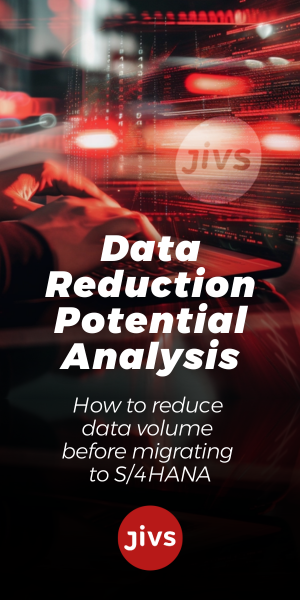No sport is more closely intertwined with the world of technology than Formula 1. Ever since the globe’s premier motorsport series was first staged in 1950, teams have pushed the boundaries of invention to gain any possible advantage on the track.
When just a fraction of a second can be the difference between winning and losing, no stone is left unturned in the pursuit of speed. Many of the safety and performance features of modern road cars that we take for granted, such as steel disc brakes, active suspension, and even rear-view mirrors, owe their existence to this fiercely competitive environment.
In the modern era, data-driven innovation is the name of the game. A common expression within the paddock is that Formula 1 was doing big data before the term was coined as teams have been collecting, processing, and analysing huge amounts of information to inform car design and race strategy for several decades.
“I was probably part of the first generation of engineers to work with this level of data back in the 1990s,” says Rob Smedley, a former race engineer for several teams and now head of data systems at F1. “You’ve got to get the value out of it as fast as possible and that requires a complex but user-friendly data architecture.”
As teams seek to squeeze as much out of this data as possible, they have more recently turned to enterprise technologies used in other industries, such as cloud computing, business software, and analytics.
“We hope these insights tap into a younger audience that wants more data, they’re more immersive and help get the message across,” says Smedley.
The world of F1 provides vendors with an extreme, high-profile showcase for their wares and relationships have transitioned from mere sponsorships and customer arrangements into genuine partnerships that influence the development of business technologies for everyone.
Getting more out of the data
Each Grand Prix is the final stage of a development cycle lasting months. Every year, teams attempt to design the best possible car within the constraints of certain specifications and rules known as the ‘formula’. This is an iterative process, with engineers providing upgraded components throughout the season to make the car go as fast as possible.
The 2022 regulations (delayed from 2021 due to the pandemic) include a new car design, complete with a new front wing shape, simplified suspension, new rear-end layout, underfloor tunnels, and wheel wake control devices. The car will also run on 18-inch wheels with low profile tyres for the first time.
The greater volume and variety of data that a team has at its disposal, the better. Each car produces millions of data points that are harvested in testing, races and in wind tunnels. But it’s no use collecting this data if it isn’t useful. Teams need rapid, high quality insights to inform car development and to optimise race strategy.
As McLaren’s principal digital architect, Ed Green is responsible for the team’s end-to-end data architecture. This covers everything from trackside servers and high performance compute (HPC) environments that power virtual wind tunnels enabled by computational fluid dynamics (CFD), to the device applications used by engineers.
“With the new regulations coming in 2022, you want to be as efficient as possible,” he says. “You need to make sure you’re not wasting any more time than you need to, so the faster we can get the data from the CFD, the wind tunnel and track, the faster you can make the car.”
You’ve got to get the value out of it as fast as possible and that requires a complex but user-friendly data architecture,” Rob Smedley
Since 2018, McLaren has partnered with Dell Technologies to transform its workspace and server infrastructure, and now the focus is on performance. For practical and regulatory reasons only a fraction of the team travel to each race. Instead, two IT engineers and a tech kit described as a third car containing equipment such as hyperconverged infrastructure (HCI) are deployed on site.
Advanced networking and cloud applications are essential to send this data from the pit lane back to McLaren’s Woking HQ, but some workloads must remain as close to the car as possible. Latency-sensitive functions remain close to the point of collection, while less time-sensitive data is sent back to the team base. In this regard F1 is a perfect example of the benefits of edge computing.
You have latency challenges when you’re at a circuit in the middle of nowhere and if you send that back then you’re making decisions based on where the car was, not where it is,” Green explains.
Dell says many of the challenges that McLaren faces, such as security and data governance, are the same as those faced by firms in other industries but that the extreme conditions and speed required are unique. The company says lessons learned can be applied across its offering to the benefit of all its customers.
“McLaren push us and if I can get the technology to work in the pit, then I can get it to work in a traditional environment,” adds Dayne Turbitt, SVP and UK GM at Dell Technologies.
The need to extract maximum data as quickly as possible is why Williams Racing has turned to KX, a data analytics firm that built its reputation in the financial sector. Both sides saw how the collection of rapid, accurate information for trading could be applied to F1 and KX’s database is so lightweight that it can be deployed on almost any device. This lends itself well to edge computing and increases the amount of real-time data that can be fed into Williams’ applications.
“Ultimately what the KX technology brings is speed and efficiency – not just in terms of how we can process live data but the turnaround time for our other processes,” says Barney Hassell, head of vehicle dynamics at Williams Racing.
“The ability to query large datasets and examine trends in car performance that the human eye can’t see – at least in any reasonable timeframe – is significant. If we need to decide on gear ratios for next year’s car then we can look at our historical data but if this is stored in various log files, this would take ages. We can also kill off wind tunnel simulations if they are pointless and if we are making good progress, we can identify it quickly and continue.”
Professionalising the business
Aston Martin is one of the most famous names in the car industry but its F1 team is actually the newest on the grid after it rebranded from Racing Point in the close season. The team is ambitious, as demonstrated by the signing of former world champion Sebastian
Vettel and the plan to create a new state-of-the-art, sustainable factory by 2022.
Technology is a critical part of this strategy and Cognizant has been signed up as both a title sponsor, reflecting the commercial value of F1 for the IT industry, but also as a key partner.
“Cognizant is helping us to develop and improve the technology that is collating and analysing our data,” explains Otmar Szafnauer, Aston Martin CEO and team principal. “This is vital because we simply generate so much data, whether it’s from the sensor technology on the cars, the powertrain, our tools that help to make the car go quicker, CFD, or even our wind tunnel.
“Cognizant’s data scientists will then analyse all of the data that is generated, which ranges from information on speed and acceleration, to engines, rpm, and the slipstream, to help us find any areas for improvement on the car, including improved efficiency.
“We’ll be able to efficiently analyse all of this data and make better, more informed decisions. This will enable us to go quicker around the track this year, but also help to identify areas for improvement and modifications that we can start thinking about for next year.”
The use of enterprise staples like ERP and CRM software provides further evidence that F1 is not too dissimilar from other industries. Aston Martin is also using IFS Cloud, a platform typically used in asset-intensive industries like logistics, mining and oil and gas to make sure its components are in the right place at the right time and to manage costs so it can confirm it is meeting regulations.
Looking forward
And like any other business, F1 has customers. The more fans a team has, the more eyes it has on the car, and the more it can earn from sponsorships. Red Bull’s partnership with Oracle not only gives the team access to tools that can drive performance, but also cloud marketing applications that will enable new ways to drive engagement. Red Bull hopes to provide fans with data-driven insights and experiences that bring fans closer to the team wherever they are in the world.
Digital capabilities are also important. McLaren is also using Cisco’s Webex to power ‘Slipstream’, a live streaming service for its partners to gain behind-the-scenes insights into the team, and Aston Martin hopes Cognizant’s augmented and virtual reality (AR and VR) capabilities could eventually lead to road car sales.
The rise of artificial intelligence (AI), machine learning (ML) and simulated wind tunnels raise the possibility that car design could one day be completely automated. But those within F1 believe the role of technology within the sport will continue to be one of enabling engineers, strategists and drivers to achieve their full potential.
“AI is already a reality but it’s aiding the decision-making process rather than making decisions on our behalf”, says Green. “When you’ve got just three seconds for a pit window, your strategy can be disrupted if you make the wrong call. AI gives our team the right information at the right time – either on the pit wall or in the factory designing parts. But we need to make sure we’re giving the AI the right data.”
“The most accurate model available is still the car on the track and physical modelling is still giving us better results than the simulated environment in certain conditions,” adds Smedley. “But CFD is so much more precise now and what we do would be very difficult to do in a physical wind tunnel. Will the simulation environment ever match the physical environment? The answer is yes, but not yet.”
How F1 is using cloud to make the sport more exciting
By its own admission, F1 was a bit behind the times when it came to its digital strategy before Liberty Global took over the sport in 2017. But since then, digital has been a major focus for the organisation as it seeks to build and engage its fanbase.
Enhanced broadcast presentation, a revamped social media presentation, and eSports have all formed part of this strategy, as has a wide-ranging cloud partnership with Amazon Web Services(AWS).
The faster we can get the data from the CFD, the wind tunnel and track, the faster you can make the car” Ed Green McLaren
As part of the deal, Formula 1 has migrated its systems to the cloud and is using AWS’s capabilities to make the sport more appealing through new regulations that will be introduced next year.
“Our fan survey showed they didn’t necessarily want more overtaking, but closer, more exciting wheel-to-wheel racing,” Smedley said. “When we started digging into the reason why races weren’t closer, we realised it was a legacy of aerodynamic performance. When a car is following another in front it loses up to 40 percent of downforce. That’s a lot of performance and lap times were being affected.”
The answer was to run simulations in a virtual wind tunnel, but this is a hugely compute intensive, time-consuming process when using on-premise equipment. AWS’s high-performance compute (HPC) capabilities to run a huge number of concurrent simulations until they had finalised a design meant cars didn’t suffer such a loss in downforce when tailing the car in front.
McLaren push us and if I can get the technology to work in the pit, then I can get it to work in a traditional environment” Dayne Turbitt, Dell
The design is now part of the 2022 regulations and it’s up to the team engineers to find additional performance within the framework that will result in closer racing.
F1 is also using AWS’s ML capabilities to find ways that it can combine its huge historical database with real-time data collected from the cars to make the sport more exciting for viewers.
“I use my experience working for teams and try to create a technical solution that my colleagues in the media department can turn into something usable and entertaining,” explains Smedley. “Analysing our database is a hugely complex modelling and algorithmic problem that lends itself well to machine learning.”
The result is F1 Insights – statistics that appear on television graphics and digital channels, hoping to provide additional context for seasoned viewers and explain concepts and events to newer fans. These include predicted pit stop strategy, tyre performance and corner performance, but also evolving stats such as car and team development over the course of a season.
Cognizant is helping us to develop and improve the technology that is collating and analysing our data” Otmar Szafnauer, Aston Martin






